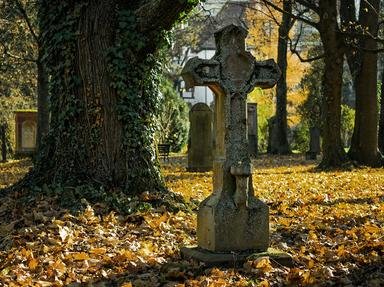Quiz Answer Key and Fun Facts
1. What German philosopher and culture critic famously proclaimed "God is dead"? He died at age 55 on 25 August 1900, after a stroke and pneumonia.
2. Which long-reigning British Queen (and "Empress of India") died at age 81 on 22 January 1901, after a period of declining health and a final stroke at Osborne House?
3. Who was the 73-year-old Bavarian-born businessman who founded a denim empire and died peacefully at home in San Francisco on 26 September 1902?
4. Which American inventor and creator of a hand-driven machine gun that saw use in the U.S. Civil War died at about 84 on 26 February 1903?
5. This Confederate general turned postwar public servant died in Gainesville, Georgia, on 2 January 1904, at about 82, after suffering pneumonia late in life. Who is he?
6. Which French novelist, sometimes called the "grandfather of science fiction" whose adventures included "Journey to the Center of the Earth" and "Twenty Thousand Leagues Under the Sea", died on 24 March 1905, at age 77 from complications of chronic diabetes and a stroke?
7. This French painter, whose self-portrait is shown here, was dubbed the "father of modern art". What celebrated artist collapsed in a storm and succumbed to pneumonia on 22 October 1906, at age 67?
8. Which Russian chemist and creator of the periodic table died aged 72 in St. Petersburg on 2 February 1907, of influenza during an epidemic?
9. Which powerful Qing dynasty figure, the Empress Dowager who effectively ruled late-19th-century China, died in Beijing on 15 November 1908, at about age 72 after a period of ill health?
10. Which Bedonkohe Apache leader and famed resistor died a prisoner at Fort Sill of pneumonia on 17 February 1909, at about age 79-80?
Source: Author
JJHorner
This quiz was reviewed by FunTrivia editor
gtho4 before going online.
Any errors found in FunTrivia content are routinely corrected through our feedback system.
